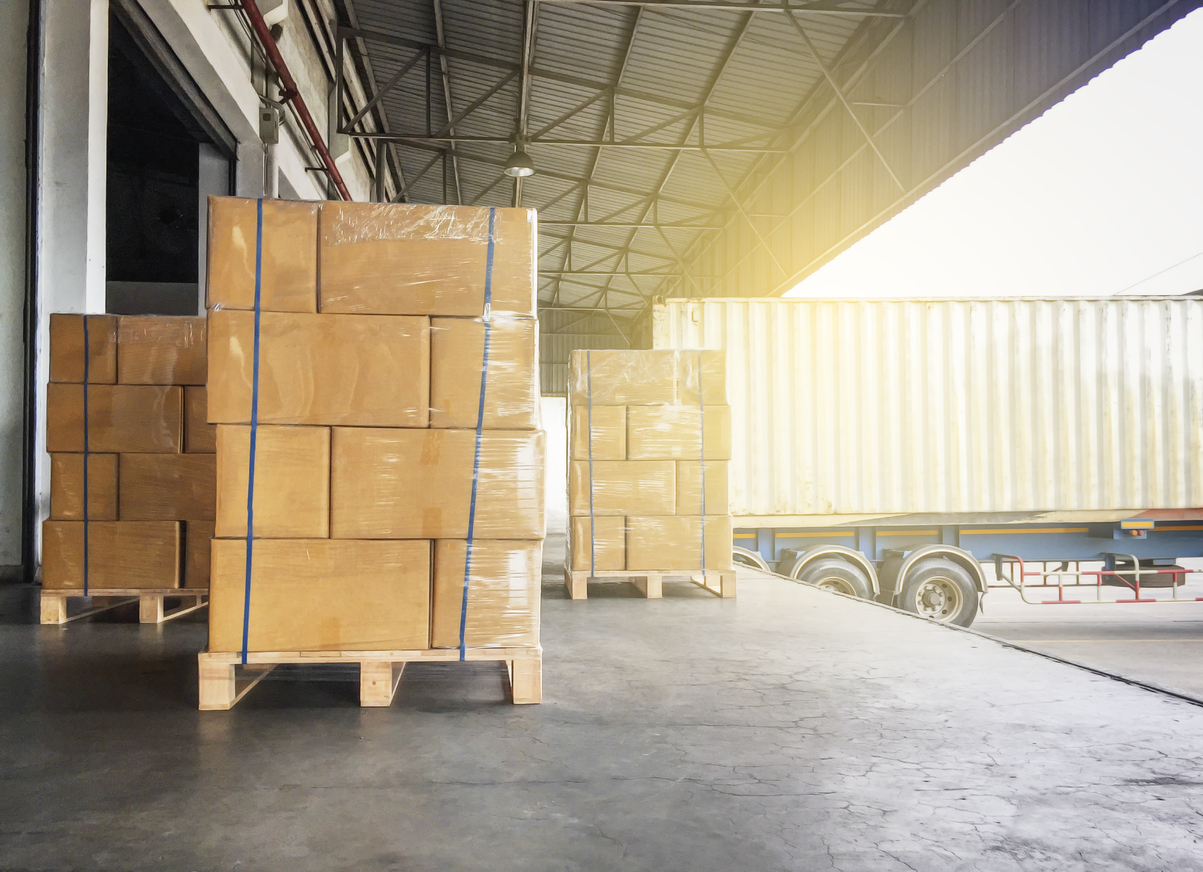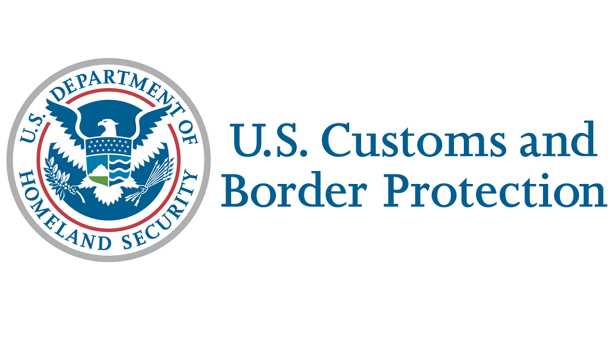Blog
Minimizing the Risk of High Tech Shipment Damage and Loss

The race is on among mobile phone manufacturers to deliver new models powered by fifth-generation technology standards – or “5G.” Faster processing times, reduced latency, and longer battery life are just some of the expectations fueling demand for the new devices, which are expected to be introduced in late 2018/early 2019.
As reported by Fortune, Motorola was first out of the gate with its “Moto Z3,” which went on sale in August 2018. However, the unit is only compatible with 3G and 4G networks, and consumers will need to purchase an “add-on module” for 5G capability when it becomes available. “Still,” the article noted, “the device puts Motorola, now a unit of China’s Lenovo, ahead in the race to bring 5G phones to market.”
Not to be outdone, LG announced it would roll out the “first true 5G phone with 5G connectivity fully integrated” in early 2019 as a Sprint exclusive. And a report by T3.com found “massive makers like Apple, Samsung, Sony, OnePlus, and Huawei already chomping at the bit to launch astounding 5G-enabled flagships.”
But what if shipments of those anxiously awaited devices become damaged while in transit? Or what if they are stolen along the way by any of the criminal networks that prey on electronic device supply chains, especially mobile phones?
Damage and Loss Management in the Shipping Industry
These same concerns apply to the legions of contract manufacturers that produce vital parts and components. A shipment of semiconductor chips or glass screens that fail to arrive at a manufacturing facility on time could shut down an entire production line. A few recent examples of unexpected supply chain breakdowns include:
- A March 2018 power outage at Samsung’s South Korean NAND chip manufacturer damaged tens of thousands of processed wafers, amounting to as much as 3.5 percent of monthly global supply.
- Electronics accounted for 16 percent of 2018 second-quarter cargo thefts, second only to “building and industrial” product thefts, which accounted for 17 percent. Food and drink-related shipments were third, accounting for 15 percent.
- Technology-based car manufacturer Tesla announced in April 2018 that “a significant volume” of flawed or damaged parts from suppliers had to be sent to local machine shops for repairs. As reported by CNBC, while some level of defective parts is considered normal, Tesla’s experiences were unusually high, with some suppliers delivering parts in need of design changes.

These are just a few of the many questions a high-tech business must ask in ensuring its valuable shipments will arrive at their final destinations on time and undamaged. As the following discussion will make clear, shipment
handling and security measures have advanced tremendously in recent years, such that the risk of shipment damage can be minimized. The question though is whether or not a logistics provider has chosen to avail itself of current best practices.
Preventing Technology Shipment Damage
A basic Internet search of “computers damaged during shipping” reveals a seemingly endless list of consumers and business managers with computers that arrived damaged who are seemingly at the end of their rope trying to have their situations rectified. One consumer used his forum as a contributor to Forbes magazine to provide a running narrative on his efforts to get satisfaction. Sadly, this did not have a good ending, with the consumer writing, “Over the course of three days [the computer manufacturer] chose to waste my time on the telephone trying to fix a broken machine when the simplest solution would have been to expedite a replacement and to arrange to pick up the defective unit… Instead, they lost the sale and the customer, and I’m left with virtually no confidence in the company.”
Similarly, a few years ago, staff members from Popular Mechanics initiated a test to determine how shipments of sensors would be handled by various shipping companies. “One disheartening result,” the authors wrote, “was that our packages received more abuse when marked ‘Fragile’ or ‘This Side Up.’ The carriers flipped the package more, and it registered above-average acceleration spikes during trips for which we requested careful treatment.”
Beyond evoking anger and frustration among consumers, damaged shipments can also have serious bottom-line implications. Chipmakers, for example, face increased pressure to shave weeks – months – from their lead times in order to meet increasingly tight manufacturing deadlines. In the highly competitive mobile phone industry, the top four manufacturers – Samsung, Lenovo, ZTE, and Huawei – brought to market a combined 103 new models during 2016, with each rollout setting precise delivery expectations for component suppliers. Any kink in those supply chains – including a damaged shipment – could cause production slowdowns that would reverberate throughout the manufacturer’s carefully crafted launch plans.
No high-tech company would ever knowingly put a shipment at risk of in-transit damage, but many fail to heed even the most basic precautionary steps to prevent damage from occurring. This can include a regular review of shipment packaging practices and of a shipping partner’s track record in protecting shipments.
Other considerations include:
Shipment Preparation
1. Proper packaging. This may seem obvious, but a high percentage of shipment damage occurs because of insufficient packaging. A shipment should be in a container that is suitable for its size and its contents. Care must be taken to ensure that items do not exceed the weight capacity of a particular container and that items are wrapped appropriately with suitable in-carton cushioning in place to protect fragile items against in-transit movement.
Shipments should be sealed using a strong tape made from either pressure-sensitive plastic, or nylon-reinforced filament, or by using water-activated reinforced tape. Do not use masking tape, cellophane tape, or duct tape, which will not form an adequate seal and may unravel while in transit.
2. Shipment labeling. This is another aspect of the shipping process that seems obvious but must be continually reinforced. Care must be taken to ensure that all address information is correct and that labels are firmly affixed to packages. For shipments to Canada, labels must be compliant with Canadian bilingualism requirements for certain information to appear in French as well as English. In addition, any old labels must be removed, and care must be taken to avoid placing a label over a seam or on top of packing tape.
3. Employee training. With a growing number of businesses using brick-and-mortar stores to fulfill eCommerce orders, it is essential that employees understand the importance of proper packaging. While distribution center
packers tend to have a higher appreciation for the need to safely and appropriately package a shipment, a retail store clerk may go about the task more hurriedly, since package preparation is not a key responsibility. A business must ensure that employees have access to proper packing materials and provide firm instruction for shipment preparation.
4. Document all shipments. A business should establish a paper trail for its shipments – in case any questions arise down the road – by carefully documenting all packages. A business may want to photograph shipment contents before a driver loads them on a truck and carefully review all shipping invoices and import/export documentation. This includes ensuring that documentation lists the correct number of packages, shipment contents, and assigned value.
In-Transit Precautions
A reputable transportation provider will make damage prevention a top priority and should offer a full overview of damage mitigation procedures. Among the specifics that should be included:
1. Minimize in-transit handoffs. The more times a shipment is loaded and unloaded, the higher the likelihood of damage occurring. A shipment may be dropped at some point, or reloaded in such a way that ignores label alerts for special handling, or subject to any other types of damage-inducing movements. This is especially the case if a shipment moves between carriers, since different carriers may have different protocols in place – or perhaps not prioritize avoiding shipment damage.
Enlisting a logistics provider that can ensure seamless service is an obvious way to minimize the risk of damage. Find a provider with a comprehensive network that provides full access to the regions where your shipments
will be sent.
This can be challenging for high-tech shipments that cross international borders. Computers or chips manufactured in Asia but destined for stores in the United States, for example, must undergo transfers during the shipping process, as they move from ocean carrier or aircraft to a ground provider. An experienced logistics provider’s network will include ocean and air assets so that even if a shipment must physically move between transit modes, the same precautionary steps will be followed with the same high standards for damage prevention in place.
A good example of this involves shipments moving between the United States and Canada. In Canada, very few carriers provide comprehensive service throughout that geographically large country. Instead, a logistics provider will patch together a network of regional carriers for service to different regions.
Under this scenario, a shipment of phones moving from the United States to Ontario could face multiple transfers – as many as four or five – in moving to its final destination. Clearly, these multiple transfers provide ample opportunities for damage to occur, including dropped packages or shipments not securely fastened or properly loaded.
A better alternative is to seek out a company that offers comprehensive service, ensures shipments never leave its network, and whose damage prevention protocols are in place – and prioritized – throughout all parts of its network.
2. Technology-based damage prevention. New technology-based tools help ensure shipment safety by providing regular updates about key metrics, or the impact of prolonged vibration or sudden impacts.
- Impact sensors are placed inside of a package or carton and send an alert if a package is exposed to a potentially damaging impact during transit. The sensor will record the time and date the incident occurred, and signal the violation either via a flashing alarm or by turning bright red. A potential limitation of this option, as reported by Canada-based MMAAZZ Technology, is for precise placement on the package or else values will not be accurate. Also, some sensors “may only read best at certain angles of force with limited numbers of impacts recorded.”
- Shock loggers are “the next step up” in shipment monitoring and are offered at several price points with corresponding levels of sophistication. One manufacturer describes its devices as “a long-term solution to accurate event data recording (EDR) with shock, vibration, tilt & roll and optional temperature and humidity recording.” Devices provide up to 18 months of continuous monitoring with connectivity provided by internal radio and/or GPS tracking.
- Smart in-line sensors are devices customized to look exactly like the products they are intended to monitor but are actually quite sophisticated sensors. As reported by MMAAZ, “given that sensors are exact replicas of the container being produced and follow the same path on the line, in essence, the smart sensor container ‘experiences’ the line in the same way that the container being processed ‘experiences’ the line.” With regard to shipping, since the in-line sensor is located inside the box or pallet, and right alongside the products being monitored, it is able to provide highly accurate readings. MMAAZZ notes that in-line sensors offer higher levels of capabilities than either shock loggers or impact sensors. “Unlike other tools such as impact sensors or shock loggers,” the analysis noted, “with the use of smart in-line sensors for shipping monitoring, shipping trends can be paired with analysis from production processes for a total view of the operation.”
- Connected freight solution. A collaboration between Honeywell and Intel resulted in an innovative “connected freight” solution that provides a system for tracking shipments in real time, including location and condition of packages throughout transit. According to FreightWaves.com, sensory tags attached to crates transmit an alert when potential damage has occurred. “Before further damage is absorbed, alerts are sent to the logistics manager. The logistics manager can then alert the driver or crew to adjust the arrangement of crates/packages in the container in a way that buffers impacts.”
3. Pallet integrity. Broken or chipped pallets often lead to product damage, since a damaged pallet is not operating at 100 percent efficiency. Be sure your provider uses only sturdy, fully-functioning pallets that meet standards established by the National Wooden Pallet and Container Association.
“65 percent of cargo damage is caused by poorly packed, blocked, or secured cargo in freight containers.” – Global Trade Magazine
4. Pallet building. Improper pallet configuration is a major cause of in-transit shipping damage. In some instances, heavier pallets are placed atop lighter pallets or are loaded in such a way that a forklift does not have easy access. “It’s also important to distribute the load evenly on the floor of the truck or railcar,” an overview in Material Handling & Logistics noted. Lighter cargo should be loaded on top of heavier cargo, and dry goods should be loaded over liquid goods. If the latter leaks, it will leak onto the trailer bed, not onto the dry goods.

Use appropriate dunnage. It’s essential that all gaps between cartons or pallets are filled with effective and appropriate dunnage. Commonly used dunnage includes airbags which can be inflated to the necessary size and pressure, and they serve as a very effective deterrent in stabilizing freight during transit and helping absorb vibration.
Minimizing the Risk of Tech Shipment Theft
While shipment theft has been around for centuries – Thomas Jefferson took the United States to war when pirates from North Africa’s Barbary Coast routinely seized American merchant ships on the high seas – today it has
evolved into a highly sophisticated and lucrative industry fueled by as much as $30 billion in U.S. goods stolen annually.
From hijacked ocean liners to stolen trailers to driver/employee theft and everything in between, shipment theft remains a formidable concern for U.S. businesses. High tech manufacturers are especially vulnerable to theft, with televisions, cell phones, computers, and audio/visual equipment among the categories most coveted by thieves.
Fortunately, today’s businesses – and their transportation providers – have more and better tools with which to protect their shipments and minimize the risk of theft.
Technology. Among the innovations helping to improve facility and vehicle security:
- Satellite GPS tools to track stolen vehicle location
- Door alarms
- Security alarms
- Vehicle immobilization technology that can remotely disable a vehicle
- Cameras
- King pin locks that prevent a tractor and trailer from being separated
- Seals that limit intrusion and alert drivers if a door has been tampered with
Employee background checks. According to Jared Palmer, former chairman of the National Cargo Theft Task Force’s Government Affairs Subcommittee, cargo theft is often perpetrated with inside help. Rigorous pre-employment screening will help weed out individuals likely to steal merchandise from a warehouse, loading dock, or truck.
Minimize touches/single-source provider. A single-source logistics provider performs all supply chain functions, including inventory management, warehouse operations, and transportation management. Since all operations occur virtually under the same roof, there is a high degree of accountability and less opportunity for theft. A single-source solution means fewer touch points as a shipment moves through the distribution and transportation processes. With fewer hands touching a shipment, there are reduced opportunities for something to go awry.
Choosing a Logistics Provider – Partner with Care
With so much at stake, a business will need to think long and hard about which logistics provider to entrust with its shipments. A business should have full confidence in its logistics provider’s commitment to shipment safety. Among the capabilities to look for in choosing a qualified logistics provider:
1. Facility security. A security-/safety-conscious logistics provider will welcome your on-site visit, and provide inspection and discussion about processes and procedures that include:
- Assurances that all trucks are well maintained
- Documentation that background checks have been performed on all employees
- Records indicating numbers and types of claims made against the company for theft/damage
- Documentation affirming compliance with all applicable ISO regulations
- Highly secure warehouse facilities with security systems and closed-circuit cameras
- Physical barriers in place with enclosed cargo handling, shipping, and receiving areas
- Physically manned or electronically controlled gates at all entry/exit points
- CCTV system in place that offers “day/night” coverage of all external and internal areas, including all vehicle storage areas

3. Transported Asset Protection Association (TAPA). A logistics provider should also meet TAPA requirements for facility and vehicle safety. TAPA is an international association of manufacturers, shippers, carriers, insurers, service providers, law enforcement, and government agencies that work together to develop minimum standards for vehicle and facility security.
4. Shipment integrity. A shipper must have confidence that shipment integrity will be maintained throughout the transit process. A growing concern among shippers is the seemingly haphazard way shipments arrive: pallets can be split apart with shipments delivered in multiple units, often arriving at different times without either the seller or the buyer receiving advance notice.
A business needs to ensure that its transportation provider understands the importance of shipment integrity and that care will be taken to ensure shipments arrive intact with no damage. This is critically important since many shipments – particular B2B shipments – travel directly to manufacturing sites and are used immediately in assembly processes. Shipment integrity minimizes the risk of an incomplete or faulty shipment, which could have severe economic consequences.
5. Expedited services. Many shippers turn to expedited services as a way to ensure the safety and security of critical shipments. Expedited services offer a high degree of customer service, and shipments benefit from minimal touches and accelerated delivery. Service options can include air charters, designated couriers, white-glove service, two-man driving teams, and next flight out. Expedited services offer unmatched attention to detail and a high level of peace of mind.
6. Last-mile services. “Last-mile” or “final-mile” delivery – the last leg of the supply chain in which shipments arrive at their final destination – is considered the most critical part of the entire distribution process. For one thing, this is the point at which a delivery actually arrives on time or it doesn’t. Last mile is a critical point of customer satisfaction – no consumer wants to come home and find an unprotected package sitting in a rainstorm or thrown in a nearby bush. Last mile is also a particular source of vulnerability, which is why a logistics provider must offer extra precautions to protect against theft and damage.
It’s important then for a logistics provider to offer last-mile services that guard against theft and also ensure shipments arrive on time and undamaged.
- Advance notice of damaged shipments. A business that learns a shipment has been damaged while in transit can notify its customer before the damaged product arrives. This can help manage customer dissatisfaction at the prospect of a shipment arriving damaged.
- Pending delivery notification. An email or text can be sent to a buyer when a delivery is imminent. This “heads-up” allows the buyer time to ensure it has personnel on hand to accept the delivery or to request a last-minute change. In situations in which delivery personnel will need to enter a private home, a photo of the delivery personnel can be sent in advance along with a copy of the individual’s security credentials.
- Proof of delivery. Customers will be notified after a delivery has been made, with detailed information including the destination address, specific location where the package was left, time of day, and the name and signature of the person who accepted delivery.
- Weather-appropriate packaging. A lastmile service provider can protect a package from rain or snow by taking care to wrap it in a plastic covering or by placing it in a covered location. A notification sticker should be left on the door, alerting the consumer that the package has been left in an alternative location.
Understanding Risk Management Claims
One leading logistics provider proudly tells customers – and potential customers – that just 0.04 percent of its shipments are subject to claims for loss or damage. This particular company specializes in logistics for shipments moving between the United States and Canada, and with fewer than one percent of shipments subject to loss or damage, it would seem that this company prioritizes safety and accountability.
But how does that 0.04 percent claims rate stack up against the rest of the industry?
It’s hard to tell. It seems that many companies choose not to make this information public or, in many instances, report damage or loss. A report by the Federal Bureau of Investigation (FBI) noted that many cargo crimes go unreported as companies try to avoid bad publicity, higher insurance rates, damage to reputation, or embarrassment. This reluctance has resulted in an inability to determine the precise number and value of annual shipment losses. Industry estimates concur that the number is somewhere between $15 and $30 billion annually.
For high tech companies, the risk of damage or loss poses a tremendous threat on many fronts:
- Ability to bring new products to market
- Seamless delivery of parts and components to meet customer manufacturing requirements
- Fulfillment of consumer orders
While a company can never entirely eliminate the risk of damage or loss, the potential can certainly be minimized. An important first step is ensuring its logistics provider shares its commitment to preventing damage and loss, and is proud to talk about its track record.
Partner with Purolator International: An Expert in Preventing Shipment Damage and Losses
Purolator International is the best-kept secret among leading U.S. companies that need reliable, efficient, and cost-effective shipping to Canada. We deliver unsurpassed Canadian expertise because of our Canadian roots, U.S. reach, and exclusive focus on cross-border shipping.
Every day, Purolator delivers more than 1,000,000 packages. With the largest dedicated air fleet and ground network, including hybrid vehicles, and more guaranteed delivery points in Canada than anyone else, we are part of the fifth-largest postal organization in the world.
But size alone doesn’t make Purolator different. We also understand that the needs of no two customers are the same. We can design the right mix of proprietary services that will make your shipments to Canada hassle-free at every point in the supply chain.
Contact us today to learn more about the technology and industry-leading practices that we utilize to minimize shipment damage and loss for our customers.